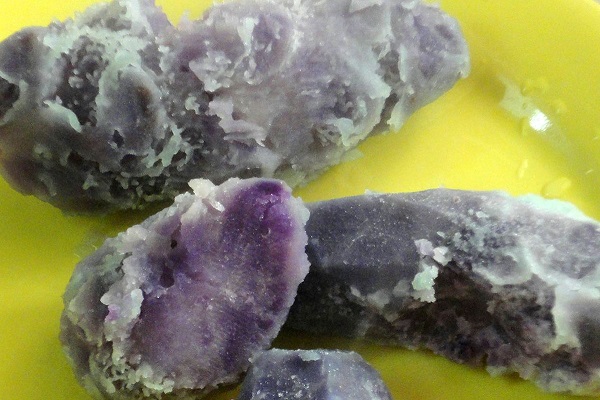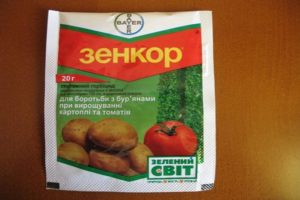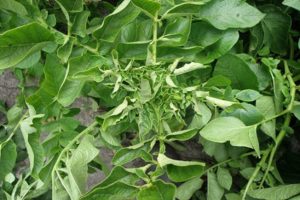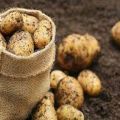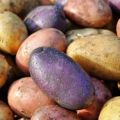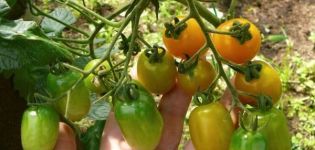Description of varieties of black potatoes, features of cultivation and care
Exotic sites are not uncommon these days. Black potatoes are no exception. Summer residents, knowing about the beneficial properties of this type of culture, willingly grow various potato varieties.
Origin
There is no single answer to this question. But most opinions agree that South America is the home of black potatoes. Some researchers argue that this crop variety appeared as a result of the selection work of scientists.
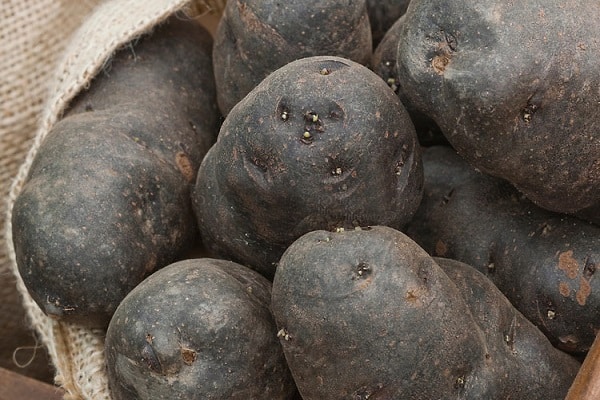
Description of the variety
There are many varieties of black potatoes, but they all share a similar characteristic. Dark roots, light aerial part, thick skin of tubers and other signs. The height of the bushes, the length of the vegetable and some other characteristic features are different for each variety.
Description of the fruit
Externally, almost black peel, inside is bright purple flesh with white veins. The shape is oblong, or round, depending on the variety, the taste is unusual. Rich in vitamins and antioxidants.
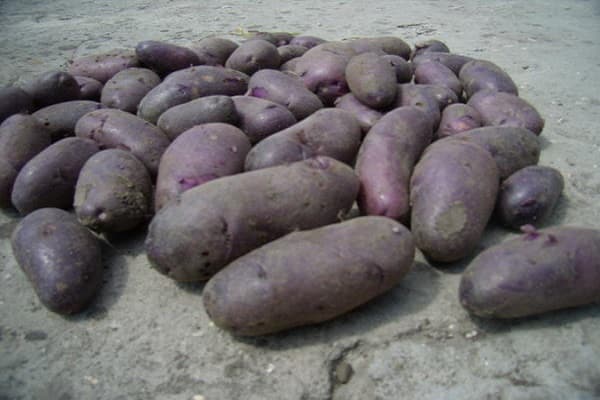
The cooking time of potatoes is shorter than that of its white counterpart, it has a nutty shade.
Description of the bush
Plant height reaches 50-65 cm, and higher depending on the variety. Erect bushes, lush stems. In general, externally, the plants are very similar.
Advantages and disadvantages
It will not be possible to unambiguously determine the positive and negative properties of varieties. Each species has its own pros and cons.
But there are still common advantages:
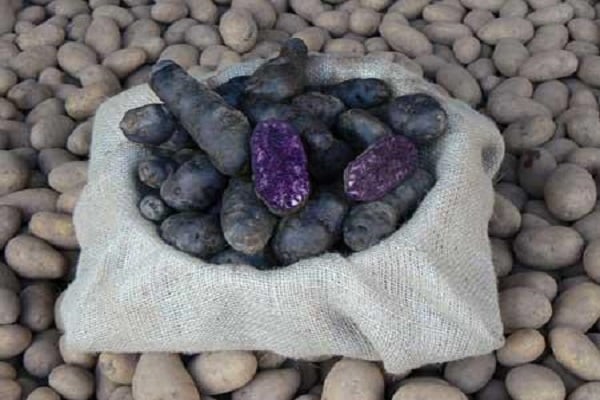
- Unusual color, taste and appearance of root vegetables.
- The commercial qualities of the root crops are very good.
- If all requirements are met, it can be stored for a long time, retaining its taste and excellent presentation.
- The vegetable has a set of nutrients that are characteristic only of varieties with black roots.
- Some varieties tolerate heat.
- High immunity to diseases.
Disadvantages:
- Low yield compared to other varieties.
- These varieties are not suitable for complete sowing of plots, they serve only as additions.
- Susceptible to certain diseases.
Black potatoes are exotic vegetables. Therefore, it is grown more for pleasure than to provide a supply of root crops for the winter.
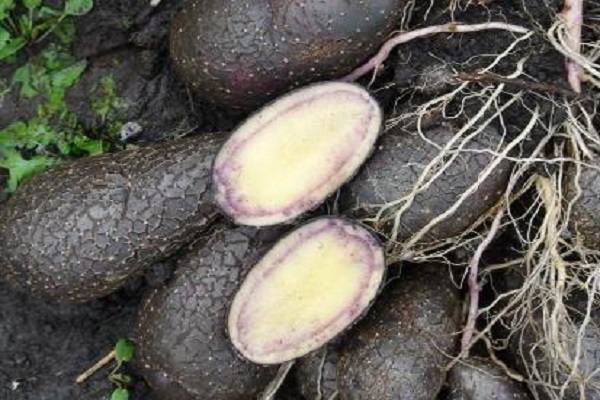
What does it taste like?
According to the description, black potatoes have a pronounced nutty flavor when cooked.Thanks to this, it wins recognition among summer residents who like to surprise their loved ones with unusual dishes. The root crop is prepared faster than the usual white potato varieties. When cooked, it retains the purple hue of the vegetable.
Disease resistance
Field plant health is an important criterion when choosing varieties for cultivation. The summer resident wants to have such types of crops that do not need constant preventive treatment.
Black potatoes are immune to certain diseases, which depends on the variety. Also, depending on the species, it is affected by some diseases.

Early maturity
The ripening period ranges from 70-110 days. It all depends on the selected variety
Yield
The disadvantage and distinctive feature of black potatoes is their low yield. It is also different for all species, it is worth paying attention to when choosing.
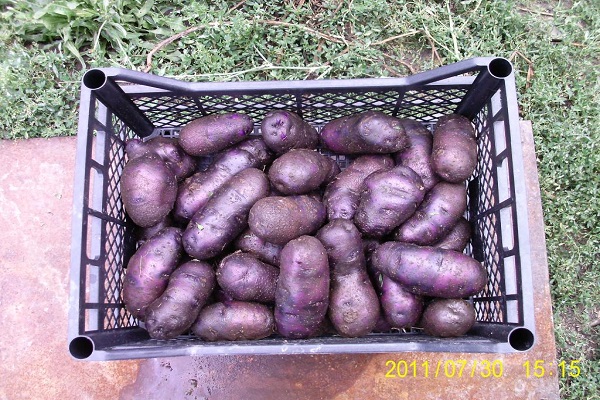
Growing regions
Exotic types of culture are gaining popularity among summer residents. Regions for growing black potatoes are unlimited. Many varieties are grown everywhere.
Distribution in Russia
Russian summer residents love everything unusual, therefore the black tuber is known throughout the country. But they grow it as a supplement. Not striving to get the maximum yield needed to feed the whole family.
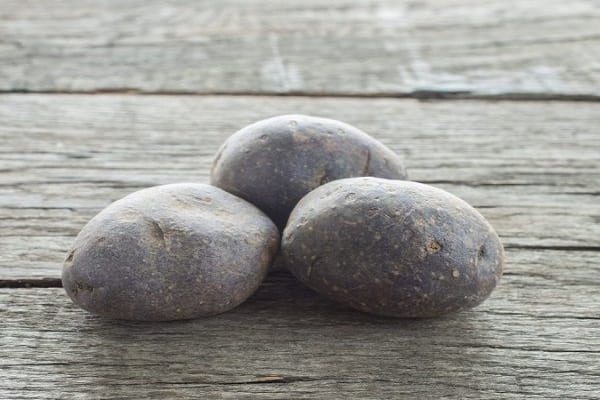
Varieties
Breeders bring to the attention of the summer resident the most common types of crops that are popular in Russia:
- Chinese truffle.
- Black woman.
- Purple Peruvian.
- Black Prince.
- Purple viking.
- Scottish black variety.
After reviewing the characteristics, the gardener chooses the most suitable type of culture for himself and his family.
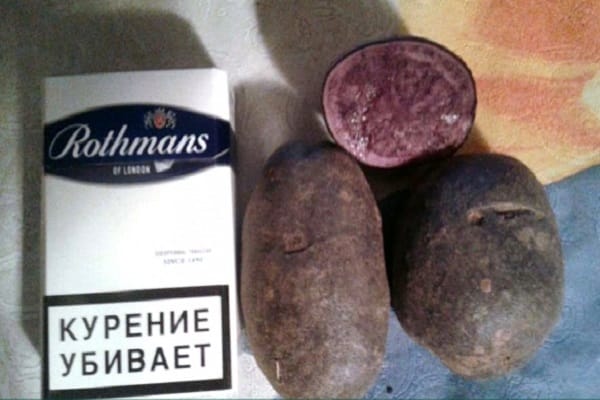
Chinese truffle
The potato variety has an average ripening period of 75-85 days. The fruits are oblong in shape, the pulp is purple. The skin is thick, which contributes to excellent storage throughout the winter.
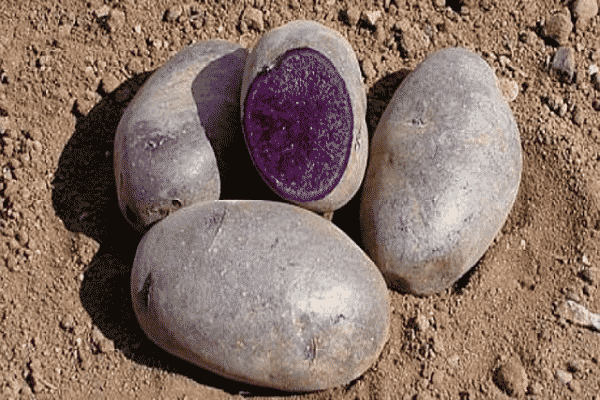
Black woman
A well-known variety among summer residents, it is distinguished by its early maturity, as it ripens in 70 days. Suitable for any type of use, during heat treatment it does not lose taste, nutrients and original color of the root crop. It is unpretentious in care, but the yield is weak. Not susceptible to root rot and scab.
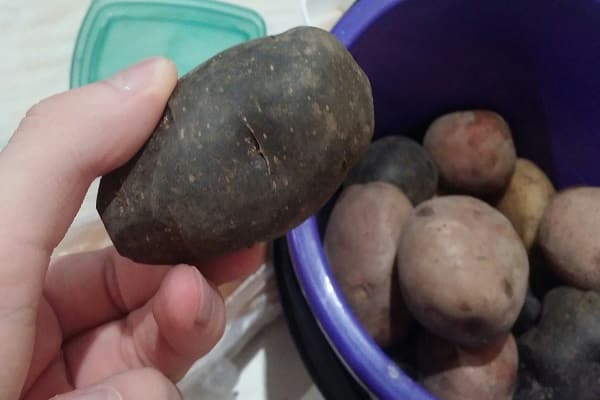
Purple peruvian
We have been working on breeding this species for 200 years. The tubers are oblong in shape, the average weight is 80 g, there are many eyes. Ripens within 100-110 days. The yield is average, but the vegetable tastes excellent. There is no immunity to diseases.
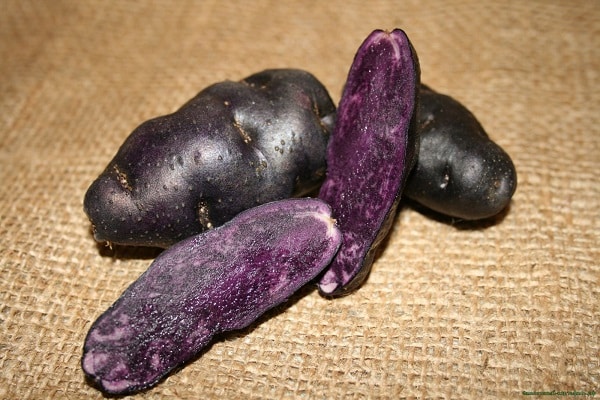
Black Prince
Matures within 70-75 days, the species is resistant to many diseases. The vegetable is elongated and oblong, up to 12 cm long. Skin color is violet-blue, flesh is beige. The average weight of the root crop is 150 g.
The variety is immune to:
- potato crayfish;
- golden nematode;
- ordinary scab;
- late blight;
- root rot;
- black leg and many other diseases.
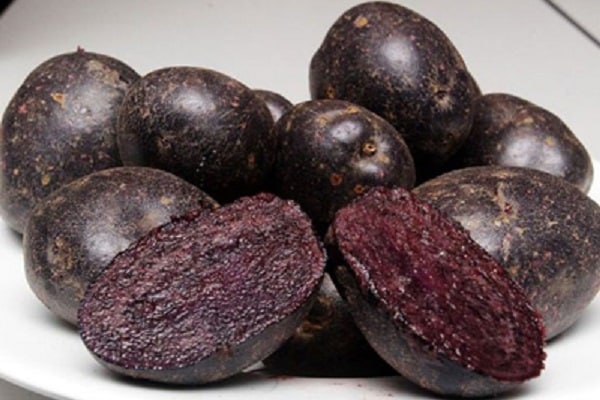
Purple viking
Refers to medium early varieties of black potatoes. The tubers are rounded and slightly elongated, the color is dark purple, the weight is from 65-90 g. The taste is excellent, has an average resistance to the main potato diseases.
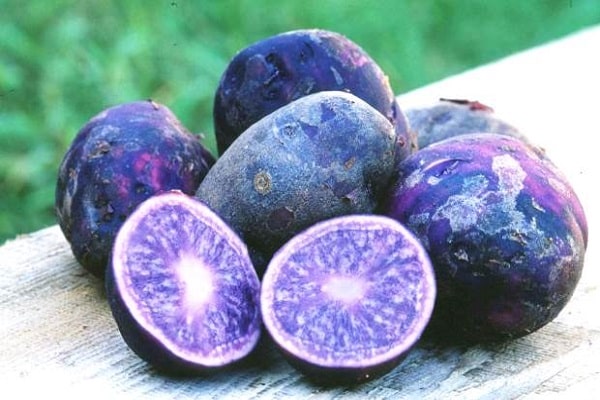
Scottish black variety
Early ripening, ready to eat at 70 days. The tubers are oval, the skin is dark purple in color, like scales. The pulp is light, has an excellent taste. Developed immunity to powdery mildew.
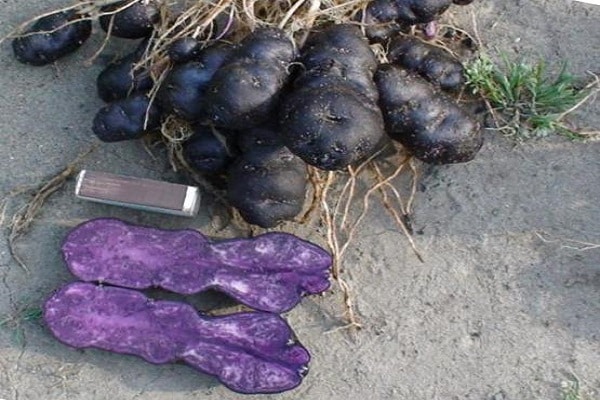
Landing
The planting of black potatoes is no different. It is unpretentious to care for, so even a novice vegetable grower can grow it. The main thing is to follow the rules and requirements of agricultural technology.
It is necessary to choose the right place, prepare seeds, plant potatoes in the garden and take care of them.
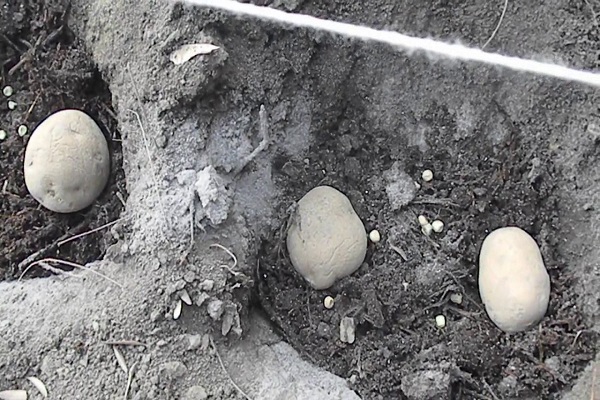
Timing
The culture should be planted in the ground after the soil has warmed up to the desired temperature. The best option is + 7-12 ⁰С.Therefore, the planting time is calculated by the summer resident himself, based on the characteristics of the climate of the region and the selected variety.
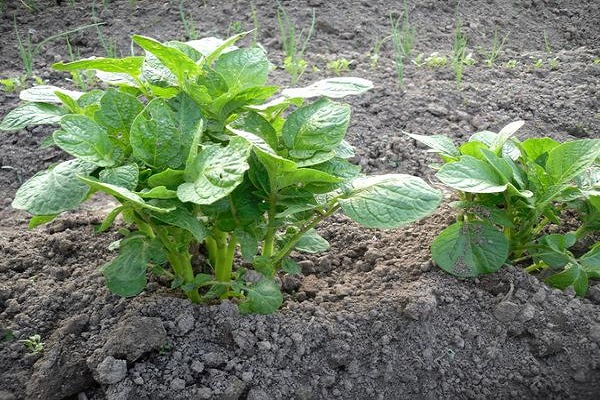
A place
A well-lit area, preferably protected from drafts and flooding, is the best option for growing root crops.
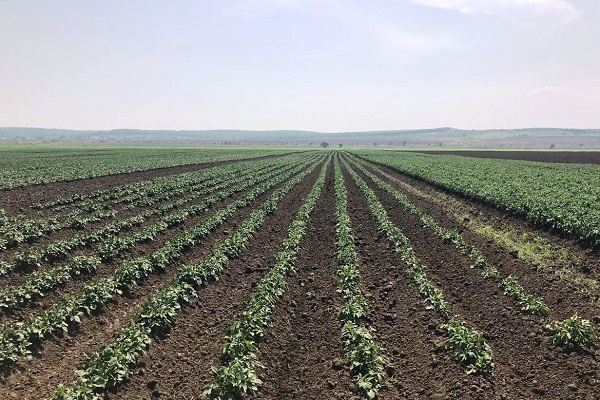
Soil preparation
They begin to prepare the land for planting in the fall, the selected area is dug up with organic and mineral fertilizers. 1 m2 10 kg of humus and wood ash are introduced. Some summer residents sow it with siderates, which are plowed together with the soil in the spring.
In April or May, it is recommended to apply dolomite flour or complex mineral fertilizers.
The best result is achieved if, during planting, the holes are filled with humus mixed with wood ash.
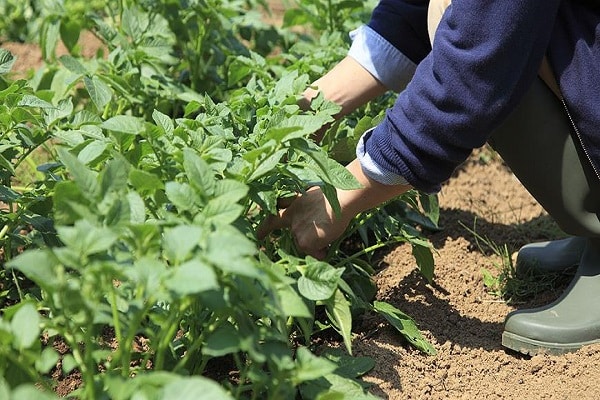
Seed treatment
The selection of seed material is carried out in the fall. Carefully discarding low-quality tubers. In the spring, they are sorted out again, removing all the poorly overwintered roots.
They are taken out of the store in advance, about 1 month before planting. First of all, the tubers are greened. Accumulating corned beef, they become poisonous and rodents do not touch them. Do this in the sun for 10 days. Then they are removed to a bright, well-ventilated room for germination.
Planting material must be processed before planting. This will reduce the risk of developing diseases and save you from insect attacks. For this, special tools are purchased in the store. Soaking in growth stimulants will not hurt.
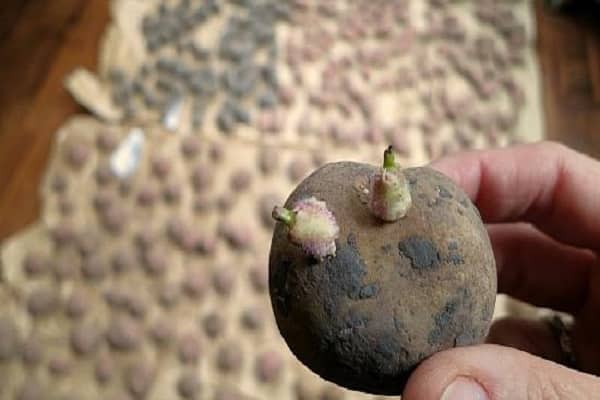
Planting scheme and depth
It depends on what place is chosen for the beds. If the soil is loamy or black earth, then it is traditionally planted in the holes. The distance between them is about 30 cm, they are deepened by 10 cm.
If the soil is predominantly sandy, use the trench planting method. The distance between the potatoes is 25-30 cm, the depth is 10-12 cm.
Areas of high humidity are recommended to be planted using the ridge method. On a bed well lit by the sun, the distance between the holes is 50 cm, the depth is standard - 10 cm.
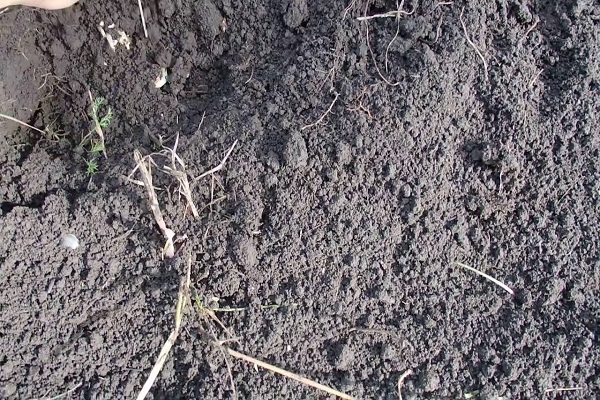
Care features
The black color of the root crop does not require any special care procedures. Everything is done in the same way as with ordinary potatoes.
Watering
Any potato needs timely watering. The future harvest depends on how the moisture supply is carried out. Summer residents are advised to organize drip irrigation. But in its absence, watered as needed in the usual way.

The plant requires abundant watering:
- at the time of budding;
- during the flowering period;
- after it blooms.
Providing moisture will result in the declared yield.

Top dressing
The plant does not refuse fertilization. No matter how fertile the land is, fertilizing is mandatory. The first time, on the 14th day after germination, apply liquid mullein or urea.
The second mandatory top dressing immediately after the potatoes have faded. Then it is watered with potassium sulfate at the rate of 500 mg per 1 bush.
If there is time and opportunity, the number of dressings is increased.

Weeding
Removing weeds is a mandatory process when growing any crop. This is especially important at the initial stage, when the plant requires the maximum amount of nutrients from the soil. And weeds draw out most of the minerals necessary for potatoes for full development from the soil.
Another reason to pull out weeds is because they are disease carriers and parasitize pests.
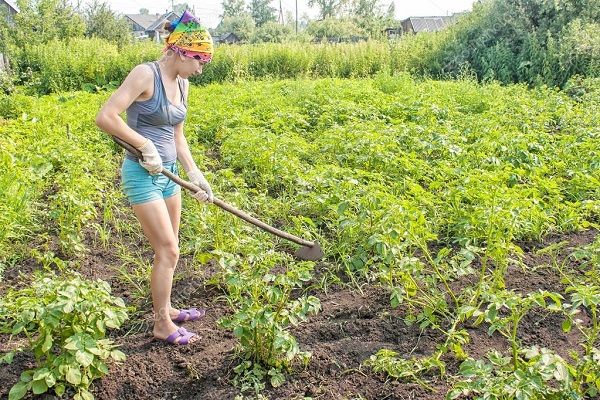
Loosening the soil
The root system of plants needs a constant supply of oxygen. Therefore, summer residents loosen the beds. Breaking up the crust formed after rain or watering.
Before sprouting, the soil is shallowly loosened, this allows the tubers to breathe and develop faster. It also reduces the amount of weeds.
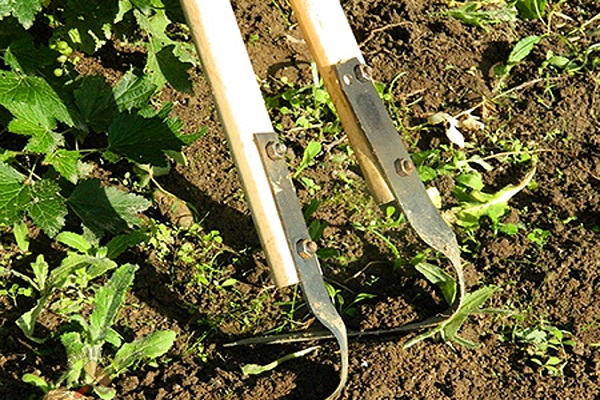
Hilling
Mandatory procedure for growing crops. This protects against the appearance of pests, the development of certain diseases and improves soil aeration. The first time they do it when the plant reaches 15-20 cm in height. Then 2 more times, until the potatoes finally grow, and this will become difficult.
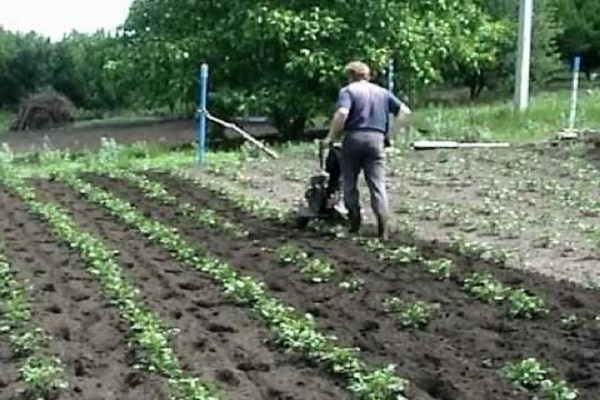
Harvesting and storage
10 days before digging, summer residents recommend mowing the tops. The plant will let all the juices into the tubers. Before harvesting for storage, it is well dried.
Stored in the same way as other types of culture. To reduce moisture, the tubers are sprinkled with sawdust.
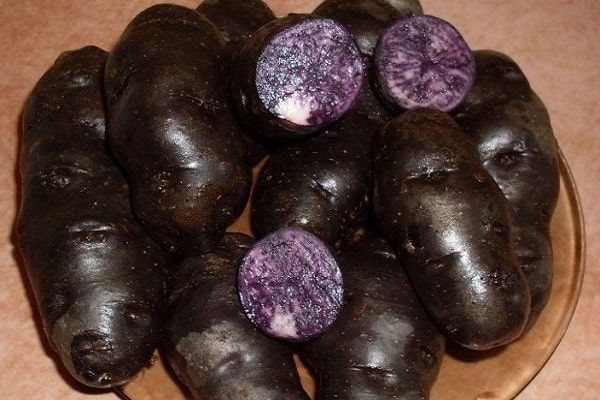
Eating
Black potatoes are used for any cooking method. It is fried, stewed, mashed and other dishes in which this vegetable is present.
The exotic appearance will amaze all friends and acquaintances. And the unusual and unique taste will please any gourmet.
